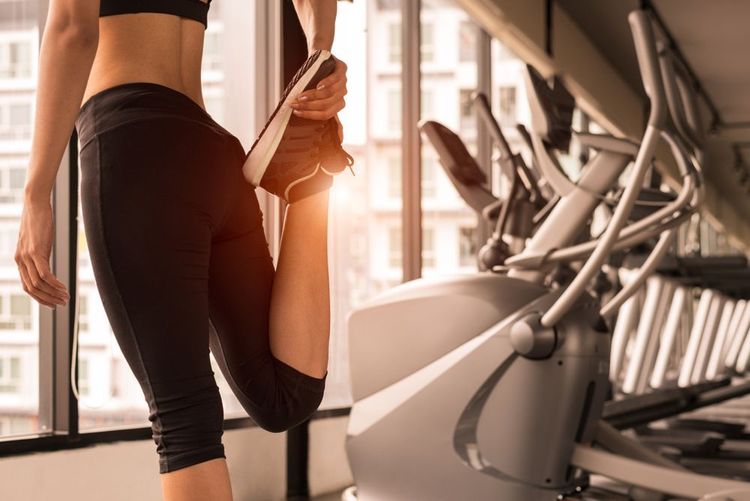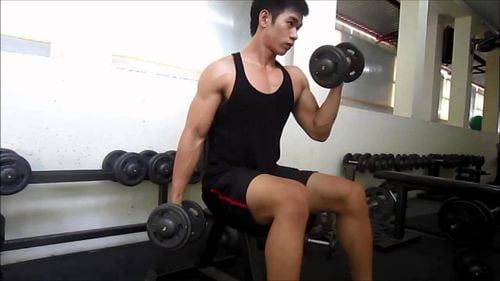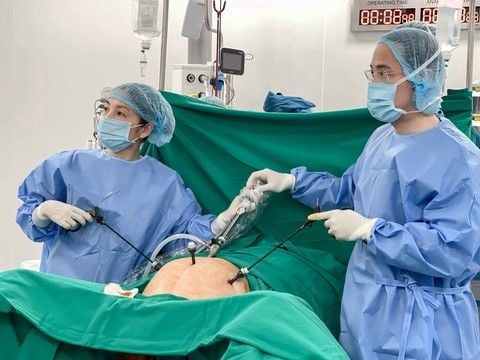Nowadays, many people opt for running in place as a form of exercise. This method of at-home workout has become particularly popular, especially during the COVID-19 pandemic. However, some people wonder if running in place is effective and how to practice it correctly to achieve the best results.
1. Benefits of Running in Place
Running in place without a treadmill is a simple yet highly effective workout method, comparable to using a treadmill. Here are some key benefits of running in place:
1.1. Effective Weight Loss
Running in place is an efficient way to burn calories and lose weight. When you run in place, your whole body is engaged, which helps burn a significant amount of calories. Compared to outdoor running, the calorie consumption of running in place is nearly equivalent. This practice helps eliminate excess fat throughout the body, allowing you to maintain a healthy and balanced physique. Additionally, running in place can be done at home, eliminating concerns about extreme weather conditions like heat or cold. In fact, the energy expenditure from running in place is comparable to other sports such as rope jumping.
1.2. Reduces Belly Fat
Running in place can also help reduce belly fat, but achieving optimal results requires practicing at high intensity.
1.3. Beneficial for Knees
When running in place, people often incorporate high-knee exercises. These movements primarily target the knee joints, promoting healthier and more flexible joints.
1.4. Reduces Risk of Falls and Injuries
Running in place warms up the body, causing muscles and bones to loosen and prepare for activity. This enhances flexibility, reducing the risk of injuries or falls. Additionally, running in place on a flat surface while coordinating arm and leg movements helps improve balance, reducing the likelihood of accidents compared to outdoor running.
1.5. Promotes Heart Health
Like traditional running, running in place is excellent for cardiovascular health. It increases blood flow to the heart, strengthening its activity and reducing the risk of cardiovascular diseases.

1.6. Boosts the Immune System
Similar to other forms of running, running in place improves overall health, strengthens immunity, and enhances resistance. Compared to individuals who don’t exercise, those who run in place are less susceptible to common illnesses caused by weather changes, such as colds, coughs, headaches, and runny noses.
1.7. Improves Mental Well-being
Running in place stimulates the body to release endorphins, which promote relaxation, reduce stress, and boost mood. It also supports better digestion, increases appetite, and improves sleep quality.
1.8. Safer than Outdoor Running
Running in place reduces risks associated with uneven or challenging terrains encountered during outdoor running, such as slopes or sharp turns, which can cause slips or injuries.
Moreover, in the context of a pandemic, running in place is a safer option for protecting yourself, your family, and the community.
2. How Long Should You Run in Place?
The longer you maintain the habit of running in place regularly, the more calories you’ll burn and the more weight you’ll lose. Aim to run in place for about 2.5 hours per week to maintain your weight. Avoid overexerting yourself, as it can lead to fatigue and, if prolonged, harm your health.
3. Tips for Running in Place
3.1. Choose Appropriate Clothing
Even when running in place, opt for comfortable, breathable, and sweat-absorbent clothing. Lightweight, cushioned running shoes are also recommended. The right outfit can enhance comfort, improve efficiency, and maximize workout results.
3.2. Warm-Up Thoroughly Before Running
Warming up is essential before engaging in any physical activity, including running in place. Proper warm-up exercises prepare the body for activity, increase heart rate, boost blood circulation, and improve muscle flexibility, ensuring smoother movement and faster energy generation. Simple warm-up exercises include wrist and ankle rotations or shoulder rotations.

3.3. Focus on Proper Running Technique and Posture
Correct posture plays a vital role in the effectiveness of running in place. Maintaining an upright stance is the first requirement to ensure successful outcomes.
- Keeping the body straight while running reduces stress on the knees and enhances results.
- To check if your running technique is correct, listen for footstep sounds. If no sound is produced, your technique is accurate.
- Run on the balls of your feet, avoiding pressure on your heels or toes. Placing too much weight on these areas can cause impact waves that affect your shin bones, knees, and back, potentially leading to injuries.
- During running, you should coordinate arm movements with your leg rhythm to maintain optimal body balance and maximize weight loss and belly fat reduction. Furthermore, if your goal is to reduce belly fat, you should perform high-knee running movements slightly more than usual.
3.4. Breathe Through Your Nose
Nasal breathing is crucial during running in place. Breathing through the mouth can lead to dehydration and fatigue. Breathing through the nose enhances efficiency and helps you sustain longer workouts without tiring.
3.5. Stay Hydrated
Many people experience side cramps or dehydration after running for some time. To prevent this, drink a glass of water about 30 minutes before running. Dehydration can also lead to muscle tension or exhaustion during the workout. Sip water slowly during the session to keep yourself hydrated and maintain energy levels.
To arrange an appointment, please call HOTLINE or make your reservation directly HERE. You may also download the MyVinmec app to schedule appointments faster and manage your reservations more conveniently.








